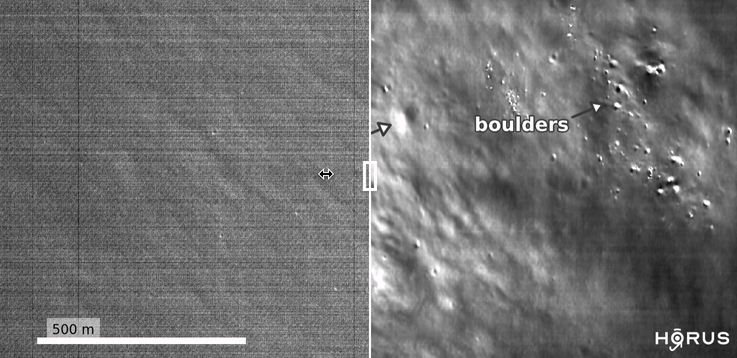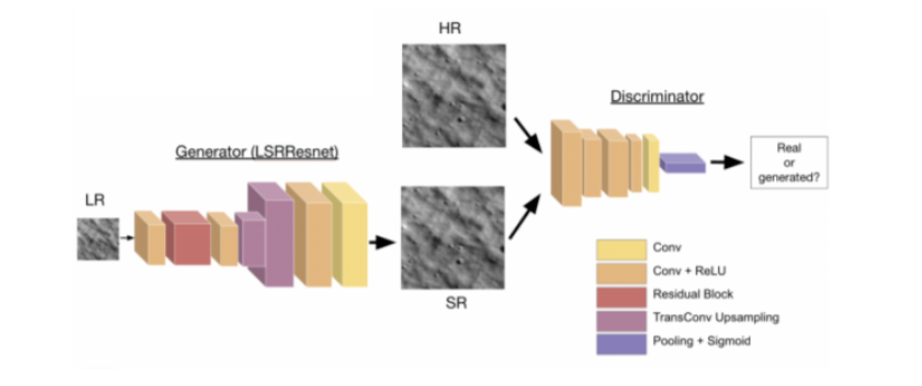Research
Illuminating shadowed regions on the lunar poles.
LOW-LIGHT IMAGE ENHANCEMENT OF PERMANENTLY SHADOWED LUNAR REGIONS WITH PHYSICS-BASED MACHINE LEARNING
LRO NAC images of the Apollo 16 landing site (LM in the center of the figure, astronaut tracks are visible), top: 0.94 m/pixel; bottom: 0.47 m/pixel. The higher resolution image reveals more of the small-scale geomorphology, such as small craters, etc., which are most relevant for ground-based exploration. The LM has a diameter of 4.22 m without the landing gear. Image credits to LROC/GSFC/ASU
Automatically highlight all the potential new cold spots.
Give the probability of it being new impact.
Autogenerate all relevant information of the area of interest. i.e. thermal images, optical images, statistics, etc.













